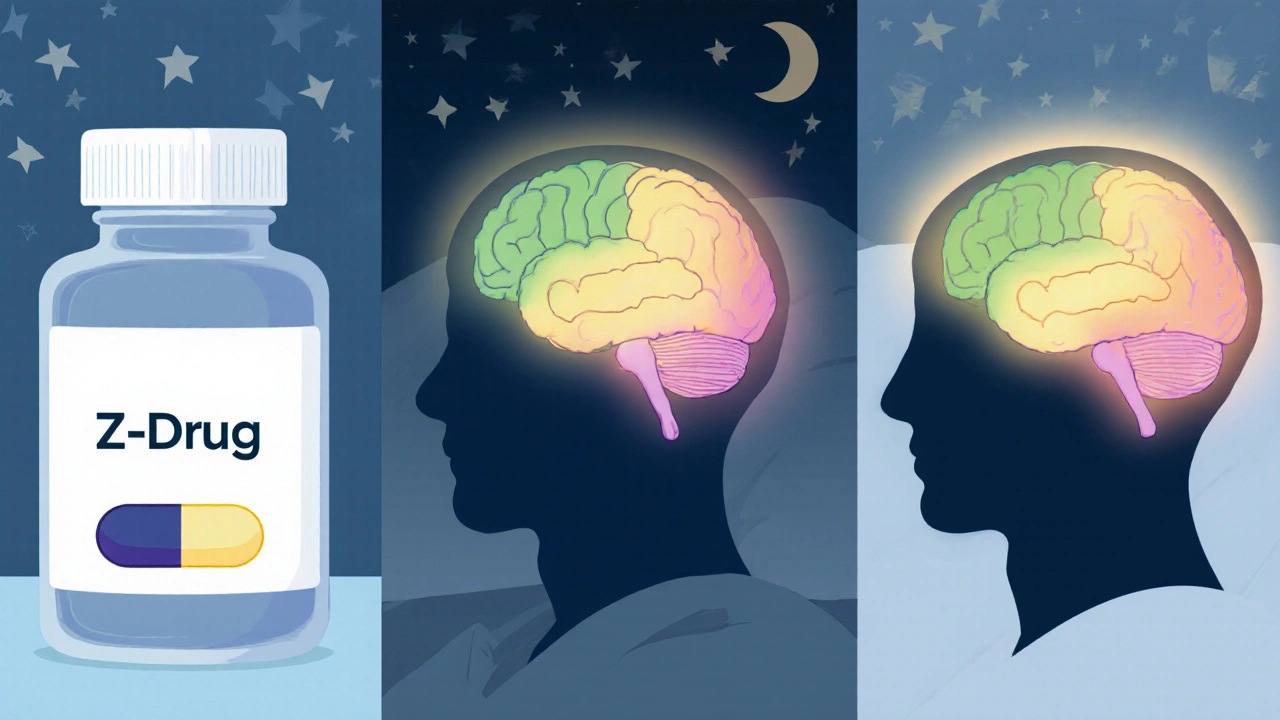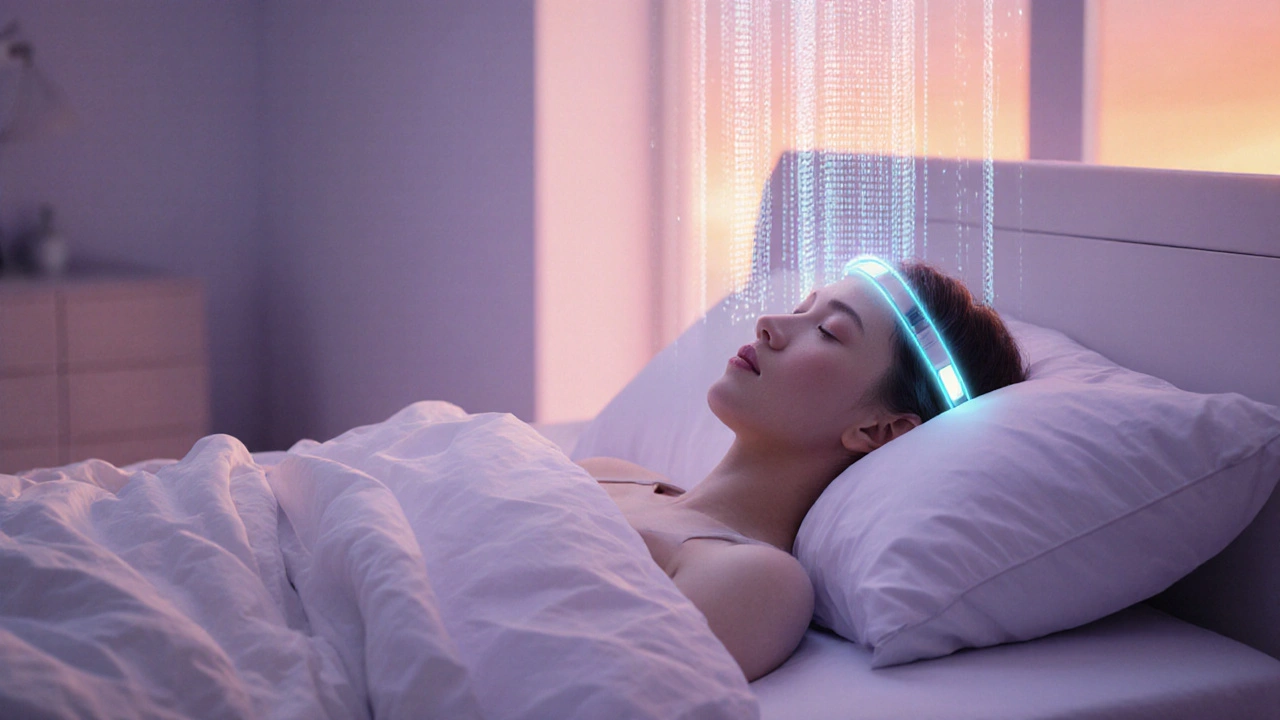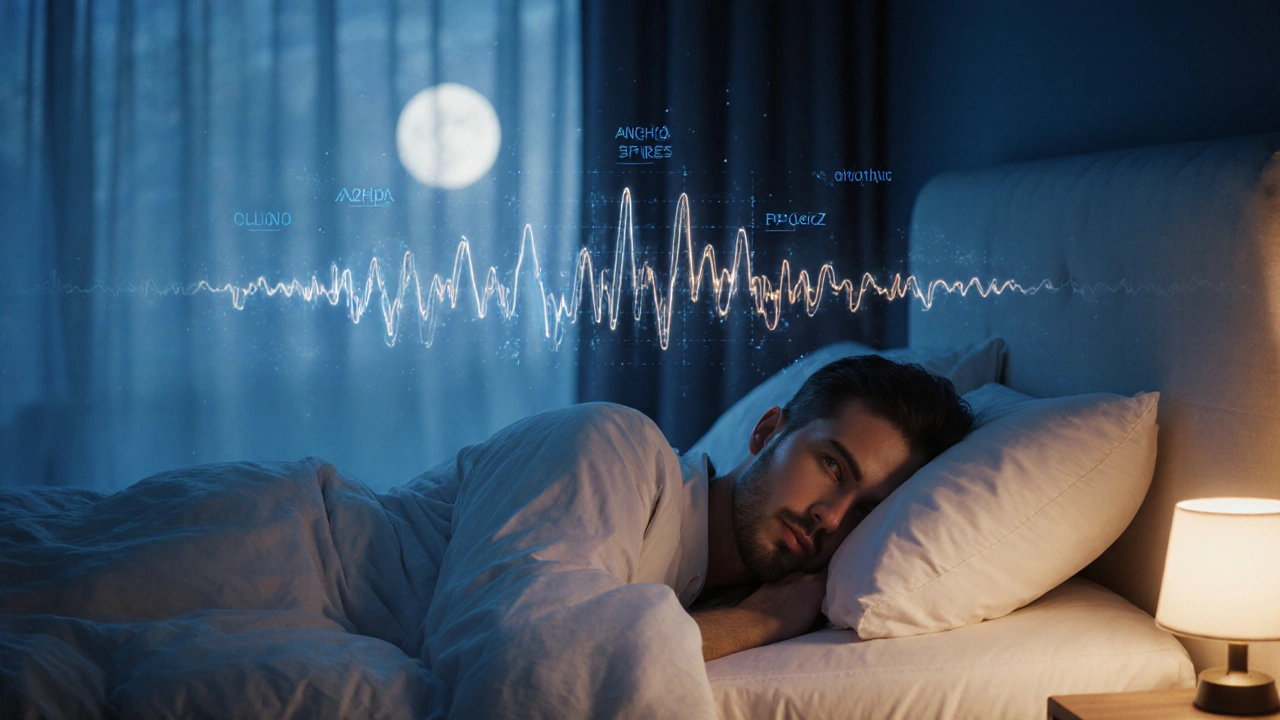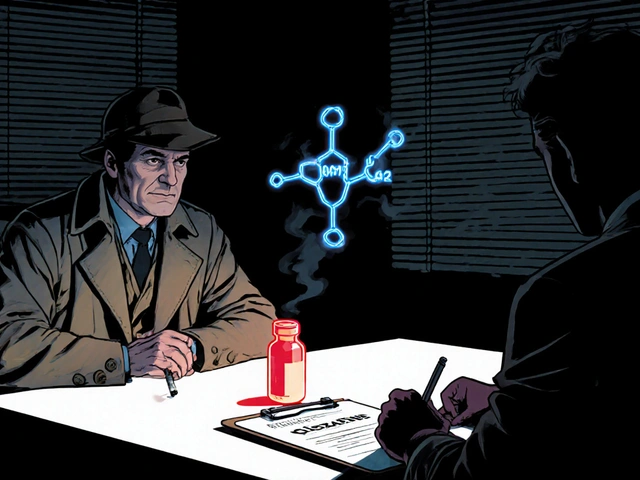Sleep Medication REM Impact Calculator
REM Sleep Effect
Select a medication and duration then click Analyze to see the impact on REM sleep.
How This Affects You
Click "Analyze REM Impact" to learn how your selected medication might influence your REM sleep patterns and overall well-being.
When it comes to a good night’s rest, Rapid Eye Movement (REM) sleep is the sleep stage where most dreaming occurs and the brain processes emotions and memories. REM makes up about 20‑25% of a typical eight‑hour night and shows a characteristic pattern of low muscle tone and rapid eye movements on an electroencephalogram.
People who struggle to fall or stay asleep often turn to sleep medications hoping for a quick fix. While these drugs can shorten the time it takes to drift off, they also interfere with the delicate balance of sleep stages, especially REM. Understanding how each medication class reshapes REM can help you weigh benefits against potential downsides.
Key Takeaways
- Most traditional hypnotics lower REM duration, which may affect mood and memory consolidation.
- Newer agents like melatonin agonists and orexin antagonists tend to preserve REM, offering a more natural sleep pattern.
- Individual response varies; dosage, treatment length, and personal health conditions all matter.
- If REM suppression becomes a concern, clinicians can adjust the medication type or timing.
- Polysomnography is the gold‑standard tool for measuring medication impact on REM.
How Sleep Stages Fit Together
Sleep isn’t a single block; it cycles through non‑REM (N1, N2, N3) and REM roughly every 90minutes. Sleep architecture refers to the proportion and order of these stages throughout the night. Disruptions in one stage ripple through the whole cycle. For example, cutting REM short often leads to a compensatory “REM rebound” later, which can cause vivid dreaming or fragmented sleep.

Main Classes of Sleep Medications and Their REM Profiles
Benzodiazepines
Benzodiazepines are a group of sedative‑hypnotics that enhance the effect of the neurotransmitter GABA. Common prescriptions include temazepam, lorazepam, and clonazepam. By amplifying inhibitory signaling, they deepen N2 and N3 stages but consistently reduce REM by 20‑40% at therapeutic doses. Long‑term use can blunt the natural REM rebound, leading to mood swings and impaired memory formation.
Z‑drugs (Non‑Benzodiazepine Hypnotics)
Z‑drugs such as zolpidem, eszopiclone, and zaleplon bind selectively to the GABA‑A receptor subtype α1. Their REM suppression is milder than classic benzodiazepines-typically a 10‑20% drop-but still noticeable, especially with nightly dosing. Z‑drugs are often favored for short‑term insomnia because they cause less next‑day sedation.
Sedating Antidepressants
Some antidepressants double as sleep aids. Trazodone is a serotonin antagonist that promotes sleep by blocking 5‑HT2A receptors. It tends to preserve REM amount while slightly lengthening REM latency, which can feel like deeper, dream‑free sleep. Mirtazapine, another option, often increases total REM time, a side effect linked to its antihistaminic action.
Antihistamines
Over‑the‑counter antihistamines like diphenhydramine act on H1 receptors in the brain. Diphenhydramine produces a sedative effect that markedly reduces REM, sometimes by more than 30%. The REM rebound the following night can be intense, making antihistamines a poor choice for regular use.
Melatonin Receptor Agonists
Melatonin agonists such as ramelteon and tasimelteon mimic the hormone melatonin and selectively activate MT1/MT2 receptors. Clinical trials show they have a neutral or slightly enhancing effect on REM-often increasing REM percentage by 5‑10% without causing vivid dreams. Because they work on the body’s natural circadian rhythm, they’re considered “physiologic” sleep aids.
Orexin Receptor Antagonists
Newer drugs like suvorexant and lemborexant block orexin‑1 and orexin‑2 receptors, which are responsible for wakefulness. Orexin antagonists tend to preserve the normal distribution of sleep stages, including REM. Studies report less than a 5% change in REM duration, making them attractive for patients who need sleep without compromising dreaming or memory consolidation.
Side‑Effect Snapshot: How REM Changes Translate to Real‑World Impact
Reduced REM isn’t just a lab number; it can affect daytime functioning.
- Memory & learning: REM supports consolidation of procedural and emotional memories. Suppression may blunt learning of new skills.
- Mood regulation: Lower REM has been linked to heightened anxiety and irritability in some users.
- Dream recall: People on strong REM suppressors often report “blank” nights, which can be unsettling for those who value dream journaling.
- Recovery from depression: Some evidence suggests that restoring REM may aid antidepressant effects, making REM‑preserving meds preferable for comorbid depression.
Practical Guidance for Patients and Clinicians
- Start low, go slow. Begin with the lowest effective dose and monitor how REM appears on any follow‑up sleep study.
- Prefer short‑acting agents if you need a quick sleep onset without long‑term REM loss.
- Consider melatonin agonists or orexin antagonists for chronic insomnia, especially if you notice mood swings or memory lapses.
- Schedule a polysomnography after 2-4weeks of stable dosing to assess REM percentage.
- If REM suppression becomes problematic, discuss tapering off the current drug and switching to a REM‑friendly alternative.

Comparison of Major Sleep Medication Classes
| Class | Typical REM Change | Duration of Impact | Key Side Effects |
|---|---|---|---|
| Benzodiazepines | ‑20% to ‑40% | During active dosing, rebounds after discontinuation | Daytime drowsiness, dependence, memory impairment |
| Z‑drugs | ‑10% to ‑20% | Transient; diminishes after 2-3 weeks of consistent use | Complex sleep behaviors, next‑day sedation |
| Melatonin Agonists | +0% to +10% | Stable with chronic use; aligns with circadian rhythm | Rare dizziness, rare hormonal effects |
| Orexin Antagonists | ±5% | Consistent across weeks; minimal rebound | Sleep paralysis, mild next‑day grogginess |
| Antihistamines | ‑30%or more | Immediate; rebounds strongly after stop | Anticholinergic effects, dry mouth, urinary retention |
| Sedating Antidepressants | Variable; often neutral or +5% | Stable once steady‑state reached | Weight gain (mirtazapine), daytime sedation |
Emerging Research and Future Directions
Recent trials are exploring dual‑action drugs that combine orexin blockade with mild melatonin receptor activation, aiming to boost sleep onset while fully preserving REM. Wearable EEG headbands are also becoming accurate enough to give consumers a nightly REM estimate without a clinic visit. As personalized medicine advances, clinicians may soon match a patient’s genetic profile of GABA or orexin receptors to the medication that least disrupts REM.
Frequently Asked Questions
Do all sleep aids reduce REM sleep?
No. Classic sedatives like benzodiazepines and antihistamines usually cut REM, whereas melatonin agonists and orexin antagonists tend to keep REM largely intact.
Can REM suppression affect my mood?
Research shows that chronic REM reduction can increase anxiety and irritability for some people, especially if the medication is used long‑term.
Is a sleep study necessary to see REM changes?
Polysomnography is the most accurate way to quantify REM. For occasional users, a home‑based sleep tracker may give a rough estimate, but it won’t replace a clinical study.
What’s the safest option if I need a nightly sleep aid?
Agents that act on the body’s natural sleep‑wake signals-like ramelteon or suvorexant-are generally safest for preserving REM and avoiding dependence.
Can I stop a REM‑suppressing drug abruptly?
Abrupt cessation, especially of benzodiazepines, can trigger rebound insomnia and a surge of REM that feels like vivid nightmares. Tapering under medical supervision is recommended.







Audrin De Waal
October 7, 2025 AT 16:38When we think about the night’s veil, we South Africans hear the drumbeat of our ancestors calling for balance between mind and body. The modern alchemy of sleep pills is just another potion in the great cauldron of human ambition. Yet these concoctions, especially the ones that steal REM, betray the very dreams that once guided our trek across the veld. Reducing REM by twenty to forty percent is not a trivial statistic; it is a quiet erosion of our emotional resilience. In the grand theatre of consciousness, REM is the stage where the soul rehearses its tomorrow. So before you pop another tablet, ask yourself if you’re trading fleeting sleep for a dimming of that inner fire.
parag mandle
October 19, 2025 AT 06:25Whoa, you just nailed the philosophical vibe, but let’s toss some hard data into the mix! Benzodiazepines, the classic heavy‑hitters, slash REM by up to 40% and that can snowball into memory fog and mood swings. The brain’s consolidation process-think of it as filing away today’s events for tomorrow’s decisions-gets hijacked. If you’re on a nightly dose, you’re essentially short‑circuiting that nightly filing cabinet. Meanwhile, orexin antagonists like suvorexant barely nudge REM, keeping the architecture more natural. In drama terms, they’re the supporting actors that let the lead (your REM) shine. Bottom line: if you value emotional stability, steer clear of the REM‑sucking giants.
Shivali Dixit Saxena
October 30, 2025 AT 20:12Yo! REM is the brain’s party mode-don’t kill the vibe!!
Pick meds that keep the beats going, like melatonin agonists or orexin blockers!!
Stay sharp, stay rested!!
Sayam Masood
November 11, 2025 AT 09:58Indeed, the nocturnal symphony thrives on a delicate equilibrium. While the immediate allure of rapid sleep onset is tempting, the long‑term cost manifests in the quiet erosion of that REM crescendo. A balanced approach, perhaps a short‑acting Z‑drug paired with proper sleep hygiene, may serve as a temporary bridge. Yet, philosophically, one could argue that surrendering REM is akin to forfeiting the subconscious’s capacity to weave meaning from daily experience. Thus, the prudent traveler chooses tools that respect the night’s natural cadence.
Jason Montgomery
November 22, 2025 AT 23:45Hey team, just a quick heads‑up: if you’re struggling with insomnia, start with the least invasive option. Melatonin agonists are basically like giving your body a gentle nudge toward its own rhythm-no crazy side effects, and they usually keep REM intact. Pair that with a solid bedtime routine, and you’ll likely see better sleep quality without sacrificing that dream‑time processing.
Wade Developer
December 4, 2025 AT 13:32While the supportive coaching approach emphasizes practicality, it is essential to acknowledge the underlying neurophysiological mechanisms. Melatonin receptor agonists act on MT1/MT2 pathways, subtly enhancing circadian alignment without perturbing the proportion of REM. Conversely, GABAergic agents, particularly benzodiazepines, intensify inhibitory signaling, thereby diminishing REM density. A clinician’s decision should weigh both the pharmacodynamic profile and the patient’s psychosocial context to preserve optimal sleep architecture.